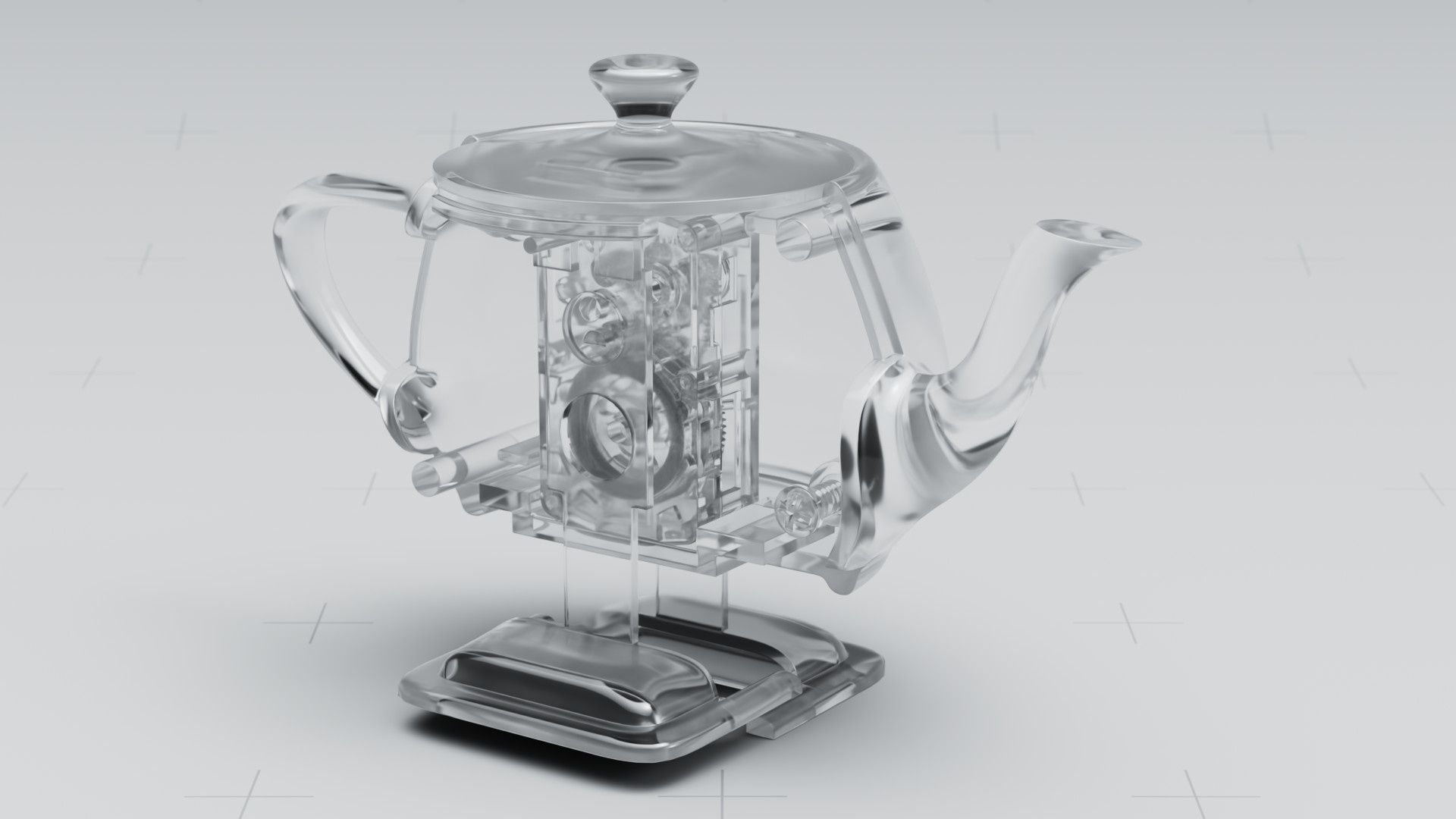Contents
This material is used to render transparent surfaces like glass, acrylics, and gemstones.
They can be colorless or colored, having the correctly colored shadow and level of absorption/fogginess.
Dielectric Parameters
Reflection Tint
True dielectric materials would retain the white color. Make subtle changes here to avoid losing all physicality as this control result is multiplied against reflected ways.
Transmission Tint
Similar to above, true dielectric materials would retain the white color. Make subtle changes here to avoid losing all physicality as this control result is multiplied against the interior and rays reflected from the inside. It's best to use the Interior > Absorption parameters below for realism.
Reflection / Transmisson : White / White - Blue / White - White / Blue
Fresnel Mode
- Artistic - Reflectivity This result controls the amount of reflection from the normal direction as well as interior bending of the rays. Presets for common materials are provided for you to use.
- Scientific - IOR This result controls the amount of ray bending and as a physical effect, the reflection result using the index or refraction. You may recall materials like crown glass and water IOR are 1.5 and 1.33 respectively.
Roughness
Microfacets or tiny bits of roughness can scatter light in a way that has a blurry result. The less rough, the mirror-like and smooth/slick the material may look. High values will simply look diffuse.
Roughness examples : 0.0 / 0.2 / 0.4 / 0.6 / 0.8 / 1.0
Normal/Bump
Here is where you supply a signal, either a texture or procedural pattern, to create a bump to the surface to "fake" surface details like small bumps or scratches. This means an artist doesn't have to model these tedious and often repetitious parts of a model.
Tail Parameters
Mix
How strong the tail effect should be in a linear fashion.
Tail Mix examples : 0.0 / 0.2 / 0.4 / 0.6 / 0.8 / 1.0
Length
Defines the roughness of the tail, full roughness at 1.0 will stretch the furthest with 0.0 being no roughness or no length.
Anisotropy Parameters
Anisotropy
This control determines the direction light travels, more forwards (positive) or more backward (negative) toward the light source when it travels through the object.
Direction
This allows you to alter the direction of the anisotropy using a tangent map/pattern.
Rotation
You can rotate the specified direction around the normal a full 360 degrees.
Dispersion Parameters
Mode
Switch between using the spread, which is a multiplier of the IOR, and the Abbe value to specify the strength of the dispersion effect
Spread
Defines how far the dispersion effects spread the refracted rays by acting as a multiplier on the IOR value. A value of 0 turns off the dispersion.
Saturation
Controls the saturation of the dispersion
Interior Parameters
These parameters control the bulk of a dielectric material. When you think of what makes a glass object look like it does...the color and clarity, it's the absorption.
Absorption Color
This is the volume color. This allows the object and shadow to be correctly tinted. A value of white is no absorption, no tint or shadow. A black value is totally opaque, black and solid. If a color is supplied and this is the top of a Lama Stack, it will be the coating color.
Absorption Radius
The maximum reach in scene units of light before it is absorbed.
Absorption Radius examples : 0.015 / 0.025 / 0.05 / 0.075 / 0.1 / 0.5
Scatter Color
This defines the color of the light that gets scattered rather than absorbed by the above absorption controls.
Scatter Anisotropy
This defines the scattering direction of the light, it can be forward (positive) or backward (negative) scattering. A value of 0 is isotropic, in all directions.
Shadow Parameters
Density
This controls how opaque the resulting shadow is after taking into account the above parameters controlling Fresnel, coloring, absorption, etc. A value of 0 is a fully transparent or invisible shadow.
Coloring
Controls the resulting coloring of the shadow where 0 is black and 1 is the same as the color set as Transmission Tint.
Fresnel Front
This sets the influence of the Fresnel setting on the shadow after a ray passes through front-facing geometry.
Fresnel Back
This sets the influence of the Fresnel setting on the shadow after a ray passes through back-facing geometry.
Advanced Parameters
Exterior IOR
This defines the exterior medium IOR be it air (the default), water, or a layered material like a varnish on top using a Stack node.
Energy Compensation
This allows you to add energy to the result as microfacet or very rough materials may lose energy and artificially darken the result.
Surface Mollification
This defines the roughness based on curvature and may help reduce fireflies or bright pixels/artifacts in rendering.
Motion Mollification
This defines the roughness based on the motion of the object and may help reduce fireflies or bright pixels/artifacts in rendering.
Lobe Name
Defines the Arbitrary Output Variable (AOV) name for the resulting Light Path Expression (LPE)
Interior Id
If several stacked dielectric lobes with extinction have the same Lobe Name, they need to have different defined Interior Ids. If their Lobe Names are different then the Id is irrelevant.
Matte
This defines the name of the lobe output of the final lobe weight to an Arbitrary Output Variable (AOV)
RenderMan Fundamentals
Galleon Ghost Ship in a bottle by Eugene Riecansky


